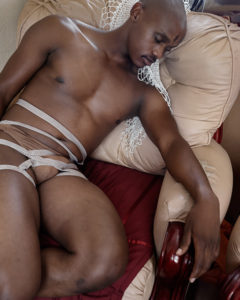
Jodi Bieber: Quiet, 2014.
About:
Jodi Bieber’s professional career began covering the 1994 Democratic Elections in South Africa for The Star Newspaper after attending three short courses at The Market Photography Workshop in Johannesburg. A turning point was being selected to participate in the World Press Masterclass held in Holland in 1996. This opened the door to travel the world on assignment for international magazines and NGO’s. She has won numerous international awards including the Premier Award at World Press Photo in 2010. She continued during this time to create her own projects and presently spends most of her time working this way. Her three monographs “Between Dogs and Wolves – Growing up with South Africa, 1996; Soweto, 2010 and Real Beauty 2014 and her other projects are exhibited in solo and group shows locally and abroad. She also mentors students to produce projects, and she gives lectures and photographic workshops all over the world.
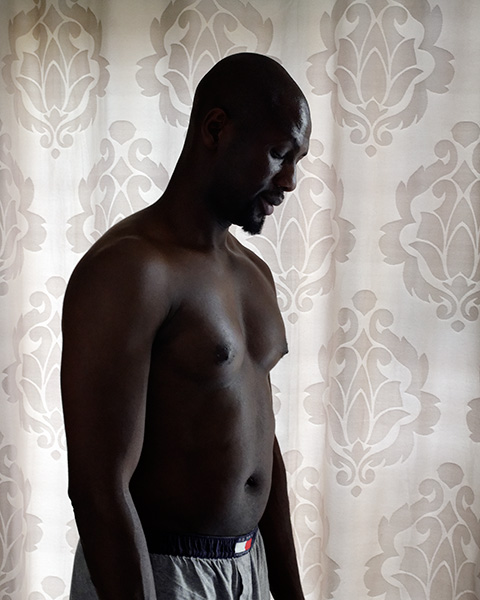
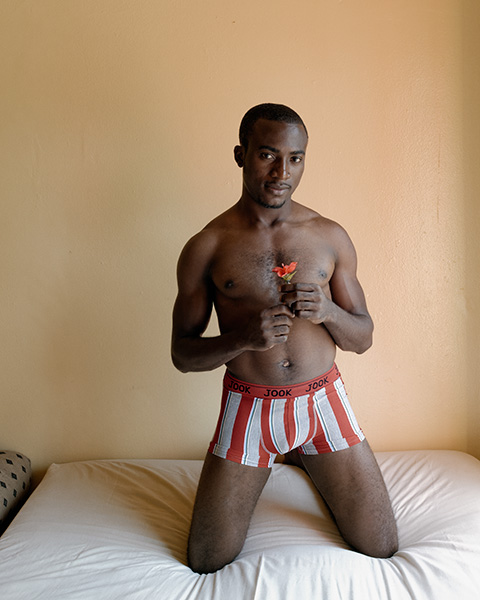
About the project:
Quiet is a portrait series of men in South Africa, in their homes, stripped down to their underwear, sometimes confronting the viewer, in other instances finding comfort or restraint in directing their gaze elsewhere. By way of their setting and disclosure, these are intimate portraits that reveal a vulnerability and calm ultimately countering the public portrayal of the male order as aggressive and forceful. Jackson Katz – American educator, filmmaker, and author – confronts the way in which the media helps to “construct violent masculinity as a cultural norm”. In response to this, Bieber explains, “it is of interest to men, and to society in general, that the normality of violent masculinity be challenged in order to create space for men to see themselves in other ways.” While the series specifically focuses on men in South Africa, Bieber continues, the subject is of universal interest.
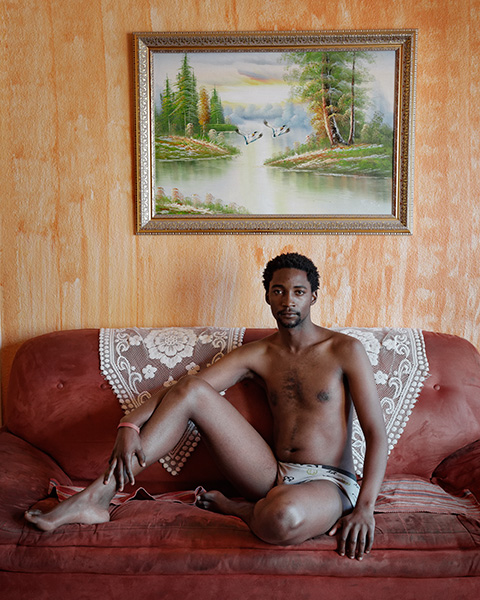

Yet this body of work has huge significance in South Africa in particular, which has gained a reputation as one of the most violent countries in the world and where shifting gender norms have become the key initiative in organisations aiming to curtail gender-based violence. And in South Africa, it is not only the media that constructs violent masculinity as a cultural norm. As South African academic Stella Viljoen expounds, “By speaking about our masculinity and that of our partner, president or clan, we are speaking about the relational hegemony at the core of our identity as a nation… Combined with damning statistics, especially on sexual crime and domestic violence, our government’s attitude towards the feminine paints an incriminating portrait of the masculine.” Elaborating on the effects of this condition, in a study done by Mohamed Seedat, Ashley Van Niekerk, Rachel Jewkes, Shahnaaz Suffla and Kopano Ratele on violence in South Africa, they explain that “patterns of violence show that almost all perpetrators are men… The dominant notions of masculinity are predicated on the control of women, and infused with ideas of male sexual entitlement. Physical violence is used to manufacture gender hierarchy (ie, teach women their place) and to enforce this hierarchy through punishment of transgression. Rape is often used as punishment for infidelity, attempts to end a relationship, refusal of sexual advances, or behaviour that is deemed to show insufficient respect for men. In some rapes of infants, the motive is to punish the child’s mother. Likewise, the raping and killing of homosexual women, which is becoming increasingly common, is often enacted as corrective action.”
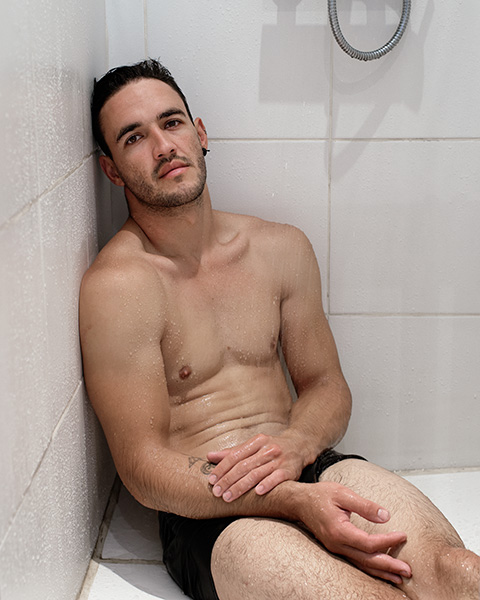
The reality of men as the main perpetrators of violent crime is the unspoken undercurrent that runs through Bieber’s Quiet series – the title referring to both mood of the photographs and the unsaid nuances embedded within them. Each image silently calls into question the notion of masculine violence as innate. The body of work as a whole recalls Judith Butler’s concept of the performance of masculinity. “Gender proves to be performative,” explains Butler, “that is, constituting the identity it is purported to be. In this sense, gender is always a doing, though not a doing by a subject who may be said to preexist the deed”. In their telling study titled Gendering Violence Masculinity and Power in Men’s Accounts of Domestic Violence, Kristin L. Anderson and Debra Umberson contextualise Butler’s ideas in relation to the instability of masculinity. “For Butler, gender performances demonstrate the instability of masculine subjectivity; a ‘masculine identity’ exists only as the actions of individuals who stylise their bodies and their actions in accordance with a normative binary framework of gender… In addition the performance of gender makes male power and privilege appear natural and normal rather than socially produced and structured.” Anderson and Umberson conclude, “Our findings challenge the notion that violence is an essential or natural expression of masculinity. Rather, they suggest that violence represents an effort to reconstruct a contested and unstable masculinity.” The portraits in Quiet embody masculine instability and fluid identity by challenging what Katz describes as “the tough guise that men feel they have to put on in order to survive. This guise damages their psyche and their ability to be decent human beings. It would be in everyone’s interest to examine masculinity, pull back the curtain on the tough guy posing and to see what is really going on underneath.” Quiet will also include a series of events such as panel discussions, artist walkabouts and school tours all aimed at stimulating conversation on different ways of confronting the constructs of masculinity, and the resulting consequences. (text Goodman Gallery, SA)(copyright photos: Jodi Bieber)
